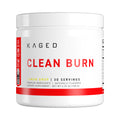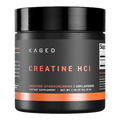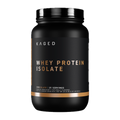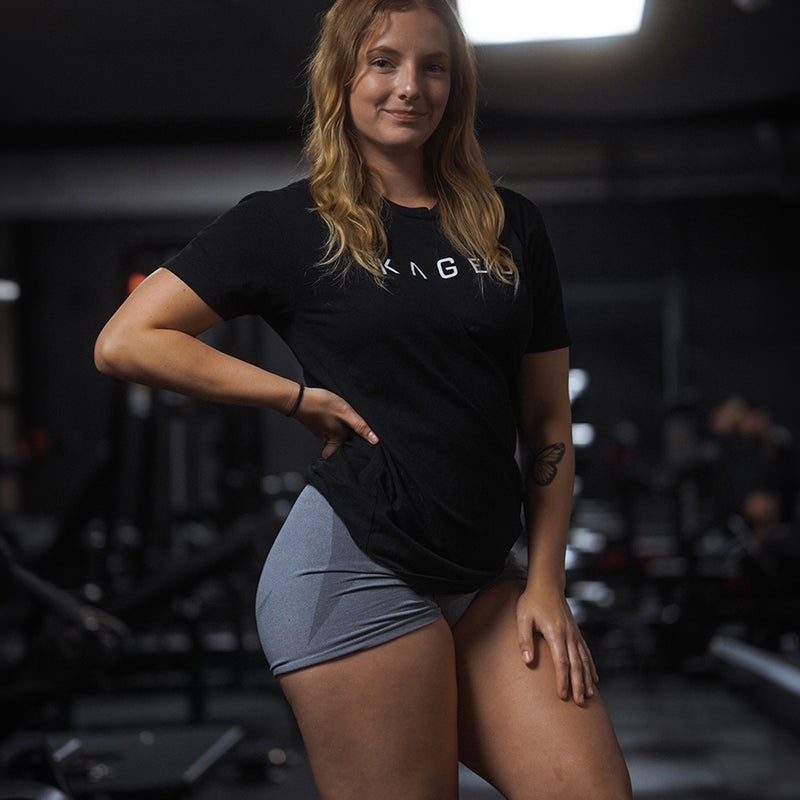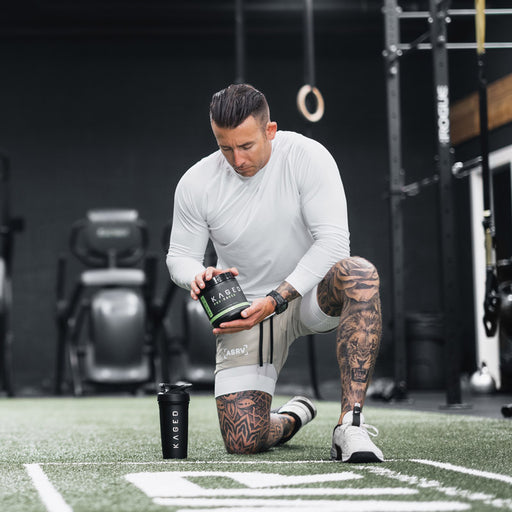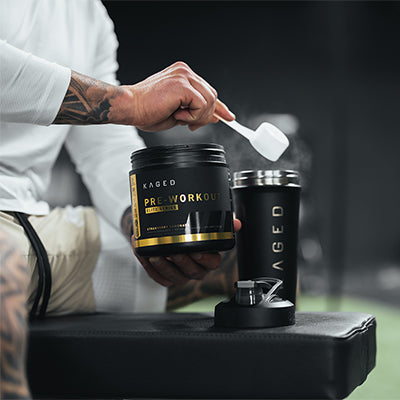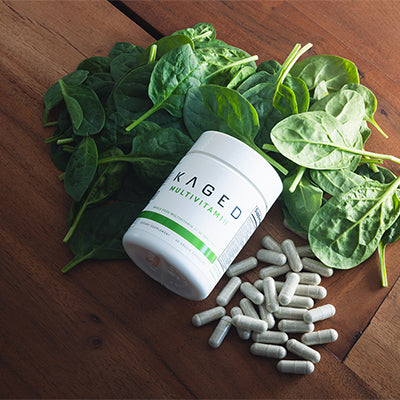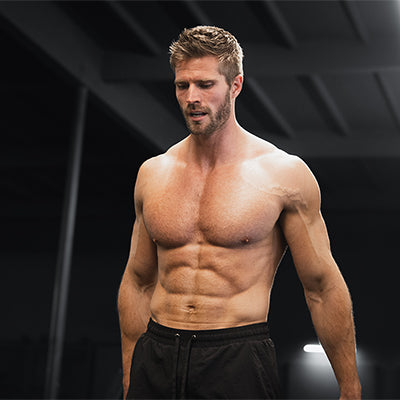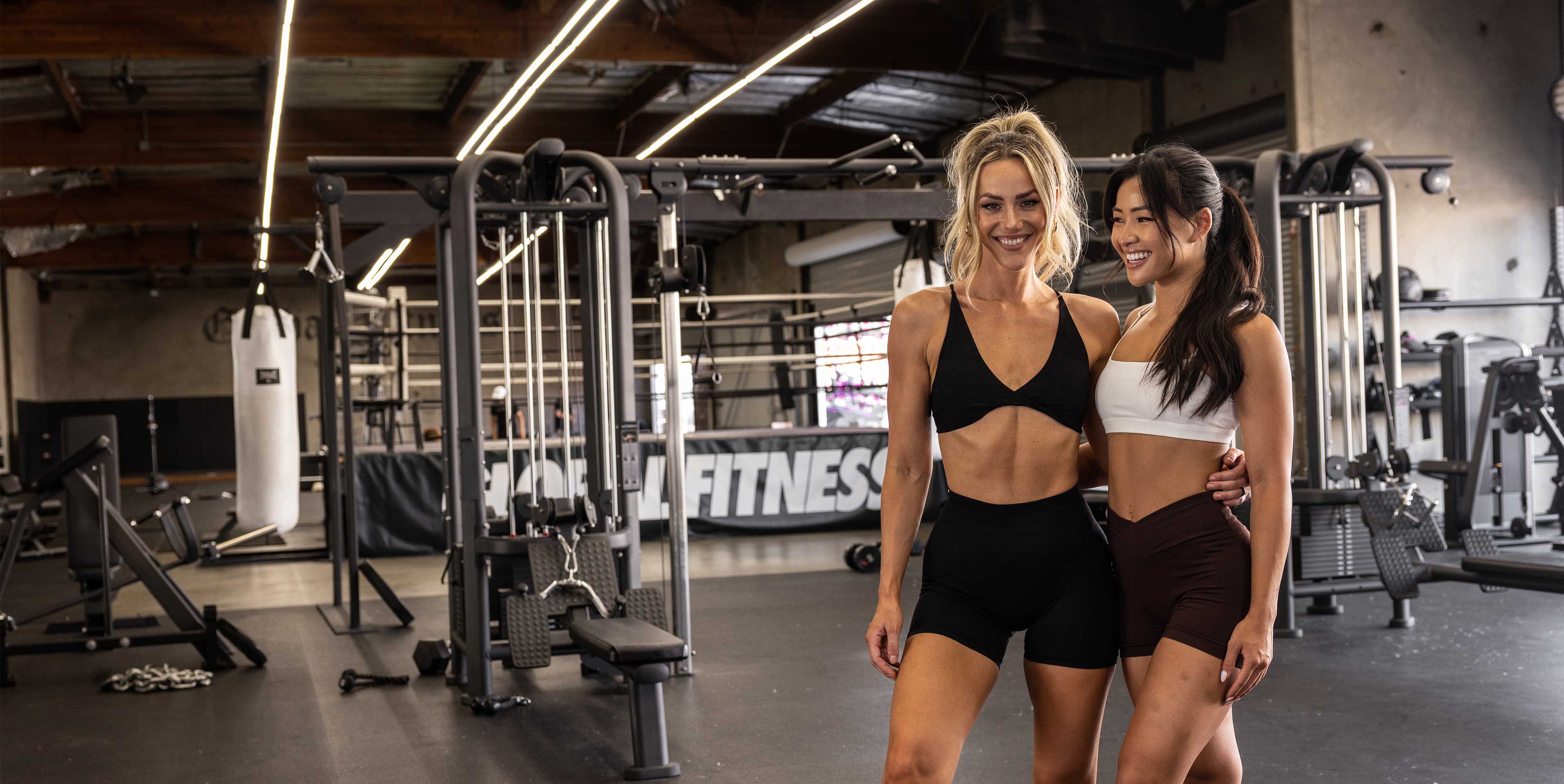If you’re looking to build an enviable physique, where it’s clear that you log hours at the gym, the answer lies in the iron. Building muscle yields many benefits beyond physical appearance. Strength training helps retain bone density, can improve your overall athletic performance, protects against injury by strengthening connective tissues, and promotes higher calorie expenditure throughout your day. Are you ready to hit the gym floor? Let’s get started.
No matter if you’re a gym rookie, veteran lifter, male, or female, this four-week training plan is appropriate for everyone. The degree of difficulty is in your control as you select the weight you use and the effort you put into each session. That being said, the plan will progress in difficulty by increasing the volume and intensity to introduce new challenges and stress to your body to promote muscle growth.
How Muscle Grows
Before hitting the weights, it’s important to understand how training works to build muscle. At the root, muscle growth occurs through a process of breaking down the fibers and allowing them to rebuild. There are two important factors to consider here: applying enough stress to the muscle to cause breakdown and allowing it adequate recovery time to rebuild. You control the first factor every time you select a weight, and the second factor will be dictated in terms of rest days in the plan. Take these rest days. Always remember that muscles grow outside of the gym, so don’t skimp on your rest days or nightly sleep if you want to see solid results.
Split It Up

Building an aesthetic physique requires equal attention be paid to all muscle groups to ensure everything grows at the same pace. Having a balanced and well-thought out training split is imperative to this. There are endless ways you can split your training over the course of a week, most often guided by the number of times you can commit to being in the gym.
In order to build muscle, a five or six-day training split is optimal. This ensures that every major muscle group gets the attention it requires, and still allows for ample rest time between sessions. Attempting to train numerous body parts in a single session will result in less than stellar results. Your energy stores are finite, by the time you get to the second or third muscle group in a single session, your glycogen stores will be running on fumes and your intensity will bottom out. Maximize your training to build serious mass by allocating a session for each muscle group.
This training plan starts with a five-day split and progresses to a six-day split. Starting with five days of work and two rest days will provide each muscle group with significant attention as well as extra recovery time as your body acclimatizes to the workload. A new training stimulus, such as a new plan, will cause muscle soreness at first, making the extra day off helpful. Progressing to six days will allow you to further split up a large muscle group for maximum results.
Exercise Order
Beyond the training split, you enlist, the order in which you perform exercises has an impact on your progress. After warming up your target muscle group, you’ll want to focus on compound exercises before moving onto isolation exercises. Compound exercises recruit multiple muscles and include your big lifts such as squats, bench press, and deadlifts, whereas isolation exercises target just one muscle, such as leg extensions. Starting with the big lifts ensures you have enough energy to lift the heavy weight and to execute them safely. They’ll build more mass in comparison to isolation exercises, so putting them into your plan when you’re strongest is the most beneficial.
Week-by-Week Overview
Week One: Rep it Out
Kicking off the training plan, the focus will be on moderate volume and reps over five working days. This will serve as an “introduction” to your muscles, getting them warmed up to the idea of what’s to come. An ideal split over five days would break down as follows: back, arms, rest day, shoulders, legs, chest, and end with your second rest day.
For each exercise, strive for three sets of eight to ten reps. This range will allow you to lift a weight heavy enough to provide sufficient stress on the muscle for enough reps to stimulate hypertrophy. In other words, it will cause the muscle fibers to break down, but not so heavy that you can only perform two or three reps.
This rep range is optimal for your goal as it induces a muscular pump, whereby the muscle is flooded with blood due to the training stimulus. The blood transports oxygen and various nutrients to the cells, encouraging protein synthesis, a necessary component to muscle building. This effect doesn’t occur with low rep work.
Week Two: Mind to Muscle
Building from the previous week, take your training to the next level by increasing your weights or adding a couple of reps to your sets. Both options put additional stress on the muscle, therefore increasing the workload. Also, move to four sets for some of your bigger compound exercises to get further muscle activation.
This week, mentally get into the workout by focusing on the mind to muscle connection. It’s easy to walk into the gym and throw weight around, but the ability to mentally connect to the targeted muscle will yield greater results. Ensure the proper muscle is starting the movement by contracting it prior to starting the exercise. Slow down your tempo (another way to add intensity), and keep your focus on the specific muscle you’re utilizing. Don’t be surprised if you need to decrease the weight as the load suddenly feels heavier—this means you’re doing it right.
Week Three: Never Skip Leg Day
It’s time to change things up this week by adding an extra day of training. Specifically, you’re going to add a second leg day to your week in order to give them the attention they deserve. Up to this point, hamstrings, quads, and glutes (all large muscle groups) have been trained in one single session, but that has limited the amount of work each muscle group has received.
There are many muscles in your lower body; it’s difficult to adequately train them in one session without lowering your intensity. In order to keep your physique balanced, it’s optimal to divide legs into two days if your weekly schedule allows for it. The common split for legs is to focus on hamstrings in one session, and quads and glutes in another.

Bumping your training to six days a week will require good planning to avoid over-taxing muscle groups. For example, you will want to keep ample space between your back and quad days, as a tired lower back will impede exercises such as squats. Also, keep space between your chest and shoulder days as shoulders are activated during chest pressing movements.
Week Four: Max Pump
As you enter the fourth week of your training plan, you’ve established solid routines and habits—these will help you continue working towards your goals. This week, progress your training by including techniques such as supersets and drop sets to some of your isolation exercises.
Supersets can be done a variety of ways. The two most common are pairing two exercises for the same muscle group together (agonist superset), or pairing two exercises using opposing (antagonist) muscle groups. An example of an agonist superset would be performing hamstring curls with stiff-legged deadlifts while an antagonist superset would pair biceps curls with triceps pushdowns. When using supersets, you can raise the intensity of your workout by keeping the time between exercises short. Overloading the muscle with two exercises back to back and the short rest between sets are both solid techniques to spark muscle growth.
Drop sets refers to the technique of performing an exercise, then dropping (reducing) the weight to continue for more reps. The weight can be dropped one or more times in a set, depending on your weight options. For example, start your final set of leg extensions with your heaviest weight for 8 – 10 reps, then decrease the weight and perform another 8 – 10 reps, you can drop the weight again, or continue to failure. This technique is great for growth due to the rush of blood to the muscle and the recruitment of a variety of fiber types through the high amount of reps you perform.
You won’t want to use these techniques on every exercise, or even on every set, as it will quickly fatigue the muscle. Instead, utilize these as a way to finish your training day, leaving everything you’ve got on the floor.
Your 6-Day Split:
Monday: Back
Tuesday: Arms
Wednesday: Hamstrings
Thursday: Chest
Friday: Rest Day
Saturday: Quads & Glutes
Sunday: Shoulders
BACK

|
Exercise
|
Sets
|
Reps
|
|
Warm-up:
|
|
|
|
Neutral-Grip Lat Pulldown
superset with
Seated Cable Row*
|
3
|
15
|
|
Workout:
|
|
|
|
Deadlift
|
4
|
8
|
|
Neutral-Grip Lat Pulldown
|
4
|
10
|
|
Single-Arm Dumbbell Row
|
4
|
10
|
|
Cable Rope Pullover
superset with
Lat Stretches
|
4
|
10
|
|
Dumbbell Shrug
|
3
|
12
|
*Increase weight each set.
ARMS

|
Exercise
|
Sets
|
Reps
|
|
Warm-up:
|
|
|
|
Dumbbell Biceps Curl
superset with
Triceps Cable Pressdown*
|
3
|
15
|
|
Workout:
|
|
|
|
EZ-Bar Biceps Curl
|
4
|
10
|
|
Close-Grip Bench Press
|
4
|
10
|
|
Spider Curl
|
4
|
8
|
|
Triceps Cable Pressdown (with rope)
|
4
|
8
|
|
Reverse-Grip Barbell Curl
|
3
|
10
|
|
Triceps Overhead Dumbbell Extension
|
3
|
10
|
*Increase weight each set.
HAMSTRINGS

|
Exercise
|
Sets
|
Reps
|
|
Warm-up:
|
|
|
|
Lying Leg Curl*
|
3
|
15
|
|
Workout:
|
|
|
|
Lying Leg Curl
|
4
|
10
|
|
Stiff-Legged Dumbbell Deadlift
|
4
|
10
|
|
Single-Arm Dumbbell Row
|
4
|
10
|
|
Good Mornings**
|
4
|
8
|
|
Single-Leg Press***
|
3
|
10/leg
|
*Slow tempo on eccentric phase; increase weight each set.
**Slow tempo on both eccentric and concentric phases.
***Place foot high on plate.
CHEST

|
Exercise
|
Sets
|
Reps
|
|
Warm-up:
|
|
|
|
Cable Chest Fly*
|
3
|
15
|
|
Workout:
|
|
|
|
Incline Dumbbell Chest Press
|
4
|
10
|
|
Decline Dumbbell Chest Press
|
4
|
10
|
|
Incline Dumbbell Fly**
|
4
|
8
|
|
Assisted Dips
superset with
Pushups
|
3
|
15
|
*Increase weight each set.
**Prone grip.
QUADS & GLUTES

|
Exercise
|
Sets
|
Reps
|
|
Warm-up:
|
|
|
|
Leg Extension
superset with
Lying Leg Curl*
|
3
|
15
|
|
Workout:
|
|
|
|
Barbell Squat
|
4
|
8
|
|
Reverse Hack Squat
|
4
|
10
|
|
Reverse Barbell Lunge
|
4
|
10/leg
|
|
Leg Extension
|
3*
|
12
|
*Increase weight each set.
**Slow tempo on concentric phase.
***On last set, drop weight twice.
SHOULDERS

|
Exercise
|
Sets
|
Reps
|
|
Warm-up:
|
|
|
|
Dumbbell Circuit*
Lateral Raise
Front Raise
Overhead Press
|
3
|
15
|
|
Workout:
|
|
|
|
Chest Supported Dumbbell Rear Delt Swing
|
4
|
12
|
|
Military Press
|
4
|
8
|
|
Lateral Raise
|
4
|
12
|
|
Seated Arnold Press
|
4
|
8
|
|
Cable Face Pulls**
|
3
|
10
|
*Increase weight each set.
**Pause and squeeze at peak of contraction.

